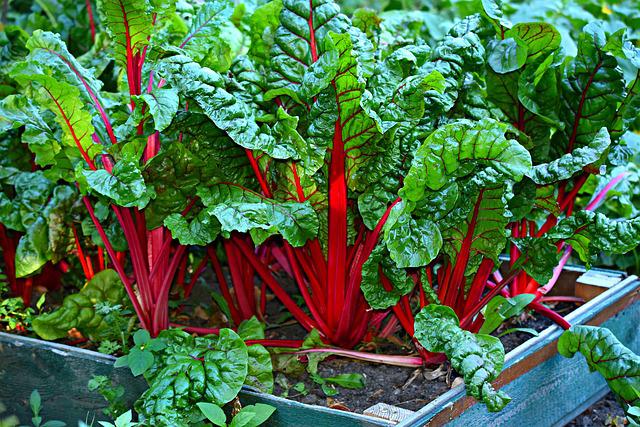Here are some budget friendly suggestions for items to consider adding to your grocery list. Choose what is appropriate for you to keep your body and budget healthy.
Going to the grocery shop with a list can save you time and money. It can also help you make healthier decisions and avoid impulse purchases.
If your budget allows, add foods that are high in vitamins, minerals, good fats, antioxidants, and fiber, all of which are beneficial to your general health and well-being.
Focus on full, unprocessed foods to ensure more nutrients and fewer additives, such as unnecessary sugar. You may need to be more inventive in certain instances.
Vegetables and fruits
For best health, the United States Department of Agriculture recommends that half of your plate be made up of fruits and vegetables. The daily requirements for fruits and vegetables vary depending on the individual. According to the USDA, a 2,000-calorie diet should include around 2 1/2 cups of vegetables and 2 cups of fruit per day.
Eating a range of whole fruits and vegetables can help ensure that your body receives the vital nutrients it requires to feel and function at its best. Selecting whole foods over liquids or sauces will provide additional fiber benefits.
Dried fruit, particularly those processed with added sugar, provide concentrated nutrition but higher sugar levels. Examine the labels to see how these foods might fit into your meal plan. Here are some fruits and veggies to add to your shopping list:

- Spinach, broccoli, and kale are examples of dark green vegetables. 1.5 – 2 cups per week is a good goal.
- Peppers, red cabbage, carrots, and tomatoes are examples of red and orange veggies. Aim for four to seven and a half cups per week.
- Chickpeas, kidney beans, black beans, and edamame are examples of legumes, peas, and lentils. Aim for one to three cups per week.
- Potatoes and squash are examples of starchy veggies. Aim for 4 to 8 glasses each week.
- Additional veggies to consider include mushrooms, onions, cabbage, and cauliflower. Aim for 3 1/2 – 7 cups of coffee each week.
- Apples, kiwis, bananas, melons, and grapes are examples of fruits. 1 1/2 – 2 1/2 cups each day is a good target.
Please keep in mind that the amounts will vary depending on your specific requirements. These guidelines are based on the USDA’s recommendations for a 2,000-calorie diet.
Budget-Friendly Suggestions
If you have a limited budget, you may want to buy in-season fruits and vegetables. They are more reasonably priced because the supply is higher, and they do not have to be shipped as far. You can also buy in bulk and freeze extras before they go bad to use later.
Apples, for example, are a good alternative for bulk purchases because they are not only inexpensive but also adaptable. However, bananas are reasonably priced and can be frozen for use in smoothies or banana bread if they are turning brown. Another cost-effective option is to purchase frozen veggies or canned fruits that are packaged in water or 100% juice.
You should also consider adding cabbage to your shopping list. It is a vitamin-rich and adaptable green that may be used in tacos, stir-fry recipes, salads, and slaws. Also, it is frequently less expensive than lettuce and lasts significantly longer.
Similarly, dry or canned beans and lentils are typically low-cost items that can help stretch a meal. These are also shelf-stable substances that will keep for a long time. Thus, if your meal plan goes off the rails one week, you won’t have to worry about beans and lentils spoiling.
Eggs and dairy
Dairy provides high levels of calcium, vitamin D, and potassium, which are vitamins and minerals that contribute to strong and healthy bones, a lower chance of osteoporosis, and a lower risk of bone fractures. Aim for three cups of dairy products each day.
It is more difficult to eat the levels of essential nutrients required for bone health if you do not consume dairy products. But, if you are vegan or cannot take dairy on a daily basis, proper planning can help guarantee your bones remain strong. There are a variety of fortified dairy options available.
Eggs are a high-protein, nutrient-dense food. They are high in vitamin D (essential for calcium absorption), phosphorus, vitamin A (essential for your eyes, skin, and cells), and B vitamins. Eggs also include riboflavin, selenium, and choline, which are essential nutrients for brain function.
Add hard and soft cheeses, cottage cheese, milk, cream, yogurt, and kefir to taste. Certain dairy products contain probiotics, which have additional health benefits. While purchasing dairy goods such as flavored yogurt, keep added sugars in mind.
Budget-Friendly Suggestions
Eggs are full of protein that can be consumed at virtually any time of day. For example, you can have eggs for breakfast, scramble them for lunch, or snack on a hard-cooked egg. Furthermore, they are commonly found at most grocery stores, convenience stores, and mini marts.
Another method to stretch a dollar is to buy cheese in bulk if possible. Not only will it cost less per ounce, but it also freezes well, so you won’t have to add it to your shopping list every week if you can stock up.
Cereals, bread, and grains
Bread, cereals, and grains are high in fiber and minerals, especially when eaten whole. Selecting whole grains for the bulk of your grains intake is a great choice for your overall health. Whole-grain bread, cereal, and grains may lower your chance of developing heart disease, type 2 diabetes, and several cancers. The fiber in these foods can also help with digestion.
Whole grains comprise all three sections of the grain: bran, endosperm, and germ. The outer layer is the bran, which includes fiber, B vitamins, and minerals. The germ is the center of the seed where growth takes place. This section of the grain has a lot of good lipids, vitamin E, B vitamins, polyphenols, and antioxidants. And refined flours are made from the endosperm, which includes the starchy component of the kernel beneath the bran. The endosperm is deficient in vitamins and minerals by nature.

Nutritional guidelines recommend 3 to 5 ounces each day, although this varies according to your needs. Some foods to consider adding to your healthy grocery list are:
- Barley
- Amaranth
- Kamut
- Rye
- Rice (brown)
- Oats
- Quinoa (a seed that is commonly referred to as a grain)
- Bread, cereal, and pasta made from whole grains
Whether baking or cooking, use whole-grain flour to increase the nutritious value of your meals. When feasible, look for whole-grain options in pre-made bread, cereal, crackers, and other products. Watch out for added sugars and refined carbs on food labels.
Budget-Friendly Suggestions
Look for low-cost grains like rice and oats, as well as store-brand pasta. You might also look for store-brand cereals produced with nutritious grains and minimal added sugar. The sugar level of the cereal should ideally be less than 5 grams.
Beef, fish, and tofu are all options.
Protein is found in meat, fish, tofu, and other plant-based animal substitutes. Animal protein also provides important nutrients like iron, B12, zinc, and others. Protein is a macronutrient that your body requires to function, as it is important for the formation and repair of tissues.
Protein is required for muscle mass growth and maintenance, which is required for daily functioning and healthy aging. It also produces enzymes and DNA which help with the immune system and promotes growth.
Fish is strong in healthful fats as well. Aim for two servings of fish and seafood every week because they have omega-3 fatty acids, which are essential for heart health, cancer prevention, and cognitive function.
Plant-based eaters can get protein from meat substitutes like tofu. Vegans must carefully arrange their intake because most plant-based proteins lack several necessary amino acids. Eating a diverse range of protein-rich plant foods can assist in maintaining adequate protein intake.
Here are some protein-rich foods to include on your healthy grocery list:
Chicken, beef, turkey, and pork are examples of meat and poultry. Aim for between 23 and 33 ounces per week.
Shrimp, salmon, halibut, crab, and canned tuna packed in water are examples of seafood. Aim for 8 to 10 ounces of protein per week.
Almonds, walnuts, cashews, and tofu are examples of nuts, seeds, and soy products. Aim for 4 to 6 ounces of meat per week.
Remember that these dietary guidelines are based on a 2,000-calorie diet. Your specific requirements may differ.
Budget-Friendly Suggestions

Get dishes that use peanut butter and canned salmon, tuna, or sardines to stretch your budget. Simply seek canned fish that has been wild-fished and packed in water. These things are not only cheap sources of protein, but they also have a lengthy shelf life. You can also go shopping for fresh meat or poultry on sale and buy in quantity.
For example, you may discover that buying value packs of various meats, poultry, and fish is more cost-effective than purchasing a smaller quantity. Simply freeze what you aren’t going to use right away to have it for another week.
Pantry Essentials
Shelf-stable goods from the other food groups are nutritious pantry staples that can help you create great, healthful meals at home. Some items to keep on hand include:
- Diced tomatoes, tomato sauce, applesauce for baking, canned fruit in water or juice, and marinated or pickled veggies are examples of canned vegetables and fruit.
- Beans and legumes, both canned and dry, such as chickpeas, kidney beans, and black beans.
- Low-sodium broth or stock, such as chicken, beef, fish, or vegetable stock.
- Olive oil, avocado oil, grapeseed oil, and coconut oil are examples of oils.
- Whole wheat, rye, oat, almond, and spelled flours.
- Cumin, cayenne pepper, cinnamon, oregano, thyme, and rosemary are examples of dried herbs and spices.
- Mustard, tamari, low-sodium soy sauce, salsa, vinegar, garlic-chili sauce, curry paste, and spicy sauce are among the condiments.
Examine nutrition labels for extra sugar, sodium, hydrogenated/trans fat, and other ingredients that you prefer to avoid.
Snacks
Snacks work best as short meals, meaning they are balanced in terms of carbohydrates, lipids, and protein. Balanced snacks can help you avoid hunger while also meeting your nutrient requirements. Because not everyone enjoys snacking, it’s fine if you choose to consume the conventional three meals each day as long as you meet your body’s nutrient requirements.
Here are some suggestions for healthy snacks:
- Yogurt
- Guacamole
- Sticks of cheese
- Chocolate, dark
- Fruit that has been dried
- nut butter with nuts
- Olives
- Pickles
- Popcorn
- Seeds
- Crackers made from whole grains
- Protein shakes, powders, and bars (check labels for added sugars)
- Hummus and tzatziki
- Grape tomatoes, carrots, celery, and celery
- Fresh Fruit
To Conclude
A nutritious grocery list assists you in meeting your nutrition objectives by delivering nutrient-dense, satisfying, and flavorful items. Loving your meals is essential for maintaining healthy eating habits, so select foods that you enjoy.
It is crucial to focus on nutrient-rich foods, but it is also important to enjoy the occasional less-nutritious item. Making a healthy food list before going shopping will help you maximize your grocery budget while aiming for optimal health.
